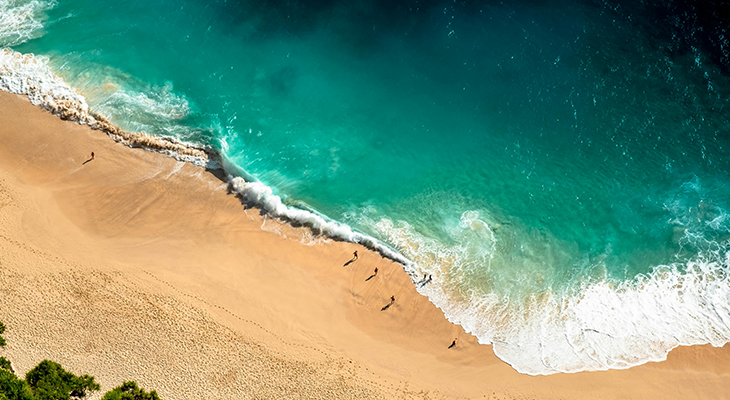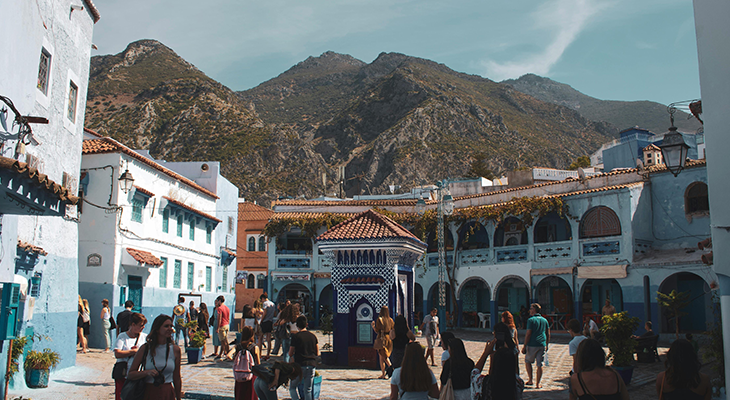Where to Travel in March: Global Destinations, Weather & Experiences
March is a strategic “shoulder month” that delivers sweet spots on price, weather and crowd levels across both hemispheres, making it one of the smartest times to plan immersive trips if you know where to travel in March. Shoulder-season dynamics mean Europe is warming without peak tourist congestion; parts of the tropics still sit in their dry window; southern hemisphere summers taper into comfortable late-season conditions; and select mountain regions offer prime snow or early wildflower hikes. Whether you’re a culture-seeker chasing festivals, a sun-hungry beach lover, or an adventure explorer wanting surf, treks or wildlife encounters, March unlocks a diversified portfolio of destinations. This guide analyzes industry data, synthesizes leading rankings, and extends beyond them with granular weather bands, festival angles, sustainability tips, and itinerary pivots helping our traveler community plan trips aligned to budget, climate tolerance and experience goals.

Table of Contents
- Global March Travel Strategy
- Weather Patterns & Seasonal Sweet Spots
- Warm Beach & Island Escapes
- Cultural Cities & Shoulder-Season Europe
- Adventure & Nature
- Late / Prime Ski & Snow Destinations
- Festivals & Events Calendar
- Budget & Value Analysis
- Crowd, Sustainability & Overtourism Hacks
- Regional Spotlight: Americas
- Regional Spotlight: Europe & Mediterranean
- Regional Spotlight: Africa & Middle East
- Regional Spotlight: Asia & Oceania
- Matching Trip Styles to Traveler Profiles
- 7 Sample March Mini-Itineraries
- Planning Checklist & Booking Timeline
- Quick Takeaways
- FAQs
- Conclusion
- References
1. Global March Travel Strategy
Knowing where to travel in March starts with embracing its “dual season” nature: late winter in higher latitudes, early spring across much of Europe, dependable dry spells in Central America and parts of Africa, and lingering late-summer clarity in the Southern Hemisphere. Instead of copying generic listicles, build a portfolio itinerary: choose a stable-weather anchor destination (e.g., Belize reef, Canary Islands, Cape Town) and bolt on a flexible cultural or alpine module (Barcelona museums, Pyrenees day hikes, Zermatt snow) so you can pivot if shoulder-season microclimates shift. Prioritize destinations offering multi‑interest layering reef + ruins (Belize), surf + souks (Morocco), wine + hikes (Cape Town), city art + early wildflower trails (Barcelona & nearby hills). This diversification hedges against isolated weather anomalies while enriching social travel networking on Trespot: you meet divers one day, hikers the next, food travelers the third. Lock “hard to substitute” inventory first (high-elevation ski lodging, limited-space dive boats, boutique riads) and keep secondary city nights cancellable. Leverage shoulder pricing airfare and midweek hotels often remain below late spring spikes then reinvest savings in premium guided experiences (small-boat snorkeling, heritage food tours) that elevate authenticity and traveler connections.
2. Weather Patterns & Seasonal Sweet Spots
March creates pronounced weather bands: Mediterranean cities like Madrid, Barcelona, Seville shift from winter chill to mild (mid-teens °C) walking temps; Alpine elevations still retain solid snowpack for late-season skiing; the Caribbean, Belize, and Mexico’s Quintana Roo continue in their dry, sunny window pre-rainy-season; Costa Rica’s Pacific side remains prime for wildlife sightings beneath clear skies; Morocco and Portugal enjoy cooler mornings with manageable mid-day warmth plus active Atlantic swells; Cape Town transitions out of peak heat into golden, low-haze hiking conditions; Australian east coast and parts of Bali stabilize after heavier rains, improving reef visibility and surf shape. Meanwhile, certain East African interiors can edge toward “long rains,” making Egypt’s temperate Nile corridor a stronger archaeological pick. Use a weather reliability matrix during planning: (1) probability of dry days, (2) comfortable daytime highs for your activities, (3) evening cooling for sleep, and (4) activity-specific conditions (snow depth, swell direction, reef visibility). This structured lens refines the broad intent of “best places to visit in March” into a personalized shortlist aligned with your risk tolerance.
3. Warm Beach & Island Escapes
If your priority is sunshine and swimmable seas while the Northern Hemisphere thaws, focus on dry season or stable trade-wind beach arcs. The Caribbean (Punta Cana, parts of the Dominican Republic), Belize’s cayes, and Mexico’s Quintana Roo deliver bright skies, moderate humidity, and excellent reef or cenote visibility. Belize stands out because you can morning-dive the barrier reef, then pivot inland to Maya ceremonial caves (ATM Cave) or jungle zip-lines few beach hubs pack that depth in a single travel week. For European travelers wanting shorter flights, the Canary Islands (Gran Canaria, Tenerife, La Gomera) supply volcanic hiking, microclimate variety, and mild temps that support trail running, road cycling, and pre-season altitude conditioning. Swap a single-resort monotony for an island-hopping micro-itinerary: two days coastal relaxation, two days inland cloud-forest hikes (La Gomera), two days star-gazing or volcanic landscapes (Teide). Integrate sustainability: reef-safe sunscreen (to protect coral polyps), refillable bottles, and locally owned guesthouses in secondary towns this counters overtourism concentration in headline beach zones and amplifies meaningful local interaction.

4. Cultural Cities & Shoulder-Season Europe
Shoulder-season European city breaks are a tactical goldmine for travelers evaluating where to travel in March who value museums, architecture, gastronomy, and social connection without high-season bottlenecks. Barcelona’s Gaudí landmarks, Madrid’s Prado & culinary markets, Vienna’s imperial museums, Munich’s beer halls and design districts, and Seville’s Moorish palaces all operate with shorter queues and less “experience fatigue.” Mild temps reduce climate-control stress (no summer heat exhaustion), making all-day urban exploration feasible. This allows deeper immersion: attending a morning gallery opening, long-form tapas or coffee cowork sessions with other travelers midday, and evening flamenco or classical concerts versus rushing through due to crowd compression. Multi-city passes (Eurail sections, regional budget flights) remain comparatively inexpensive; stacking two or three mid-size cities increases cultural diversity while preserving cost efficiency. Add a tactical day trip layer: Granada from Seville, Montserrat from Barcelona, Salzburg from Munich each adds biome or heritage variety without new full check-ins. Capture networking potential by booking social boutique hostels or cowork café events where early-season digital nomads gather before the April/May influx.
5. Adventure & Nature (Hikes, Surf, Wildlife)
March adventure travel divides into surf swells, transitional hikes, wildlife clarity, and multi-biome loops. Morocco (Taghazout, Imsouane) and Portugal’s west coast deliver consistent Atlantic shoulder swells ideal for intermediates chasing less crowded lineups than prime winter or summer peaks. Pair morning surf sessions with afternoon souk explorations or hammam recovery. Costa Rica’s Pacific dry season concentrates fauna around dwindling water sources, improving spotting (sloths, capuchins) while volcano areas (Arenal, Rincón) remain trail-accessible. Moab’s moderate temperatures extend safe daylight trekking windows across sandstone arches and canyons. Consider a contrast itinerary: reef (Belize) + highland cloud forest (ATM cave or Mountain Pine Ridge), or Cape Town coastal hikes + Winelands harvest tastings + day trip to penguin colonies. Photographers gain soft angled light in early spring latitudes and crisp post-rain horizons in some southern hemisphere zones. Pack modular gear: ultralight shell (variable coastal winds), reef booties, mid-layer fleece (alpine dawns), interchangeable lens kit (wide for landscapes, tele for wildlife). This integrated approach extracts maximal experiential diversity from a single March travel window.

6. Late / Prime Ski & Snow Destinations
Late-season skiing hinges on elevation, aspect, and glacier insurance. Resorts like Zermatt and St. Moritz (and other high Alpine domains) maintain robust March conditions with longer daylight for extended slope time and a dual experience: potential morning powder followed by sun-drenched terrace après. Lower valley crowds thin as some casual skiers pivot to early spring city trips, increasing slope space for devoted riders refining technique. Optimize for snow quality by targeting north-facing or glacier runs early, then shifting to south-facing cruisers as corn cycles develop mid-day. Integrate a hybrid snow + city design: three to four ski days, then train transfer to Barcelona, Milan, or Zurich for cultural decompression. Late March also presents value: certain lodging and pass promotions emerge once peak winter holidays conclude. Maintain flexibility: choose refundable or partially modifiable passes where possible and monitor freeze–thaw patterns; if a warm spell accelerates melt, redirect to high-altitude zones or shift final days to urban exploration. Gear tip: wax for mixed temp snow; bring lightweight crampon-compatible boots if planning ridge hikes or glacier viewing walks.
7. Festivals & Events Calendar
Festivals elevate social discovery key for travelers leveraging community platforms. In Mexico’s Yucatán, spring equinox events (e.g., light-and-shadow phenomenon at Chichén Itzá) add cultural depth to a beach itinerary. Cape Town’s late-summer wine harvest fosters barrel tastings and vineyard picnics under stable skies. European cities curate early-year art, design, and gastronomy programming before Easter surges, meaning easier ticket access for concerts, exhibitions, and food markets. Morocco’s shoulder vibe offers informal local music gatherings and culinary workshops with fewer outside observers. Construct a festival overlay calendar mapping each prospective destination’s March schedule, then weigh (a) authenticity, (b) crowd amplitude, (c) logistic complexity (tickets, transport). Prioritize smaller regional events that facilitate two-way cultural exchange (cooking classes, artisan fairs) over mega-festivals with passive spectating. Document potential date overlap early; even modest festivals can spike limited accommodation categories. Use local transit or shared shuttles to reduce congestion and emissions while expanding conversation opportunities with residents and fellow travelers.
8. Budget & Value Analysis
March’s financial upside is rooted in shoulder elasticity: airfare and mid-range lodging in Europe often remain deflated relative to late spring, while weather reliability in Belize, Canary Islands, and Quintana Roo still commands moderate pricing but yields strong “experience per dollar” (reef visibility, sunny days, low storm risk). Deploy a split allocation strategy: invest in premium, capacity-limited experiences (private reef snorkel, guided glacier excursion, small-group culinary tour) while economizing on interchangeable commodities (standard urban hotel nights, intercity rail booked in advance). Track dynamic pricing windows: book transcontinental flights 60–90 days out; set alerts for fuel surcharge shifts. In ski segments, leverage afternoon half-day passes when freeze–thaw cycles degrade late-day snow saving cost while preserving quality. Bundle travel insurance covering flexibility (weather anomalies, health) because March’s transitional nature, though generally stable in chosen corridors, can still produce localized disruptions (late storm or early heat wave). Redirect any realized savings into sustainability contributions (reef conservation donations, community-based tours) to amplify positive impact.
9. Crowd, Sustainability & Overtourism Hacks
Selecting where to travel in March with a sustainability lens starts by timing traditionally saturated destinations before their strain peak: Barcelona museums pre-summer, Andalusian palaces before cruise swell, Canary Islands secondary islands (La Gomera over densely trafficked Tenerife south zones), or Belize inland caves with certified low-impact guides. Adopt a dispersal mindset: rotate between headline landmarks and underrepresented neighborhoods (markets, community art districts) to spread spending. Transportation: prioritize rail (Europe), consolidated dive/snorkel departures (Belize), shared transfers (Cape Town Winelands), and micro-hike loops accessible without car hires. Consumption choices: reef-safe mineral sunscreen, refill systems, locally owned guesthouses or eco-labeled lodges, and low-plastic picnic kits. Digital behavior: use offline maps to limit constant data pings in fragile network zones and respect geo-tagging discretion for ecologically sensitive trails or surf breaks. Sustainable timing is not only ethical; it fosters richer dialogue with locals who are less fatigued by peak-season volume, enhancing traveler community building.
10. Regional Spotlight: Americas
The Americas deliver a modular canvas in March. Belize integrates world-class barrier reef snorkeling, Blue Hole dives, and inland Maya archaeology (Caracol, ATM Cave) within short transfers ideal for travelers craving biodiversity+heritage density. Mexico allows a beach + interior culture blend: start along Quintana Roo’s beaches and cenotes, then night bus or short flight to Oaxaca for indigenous gastronomy and crafts workshops, or onward to Mexico City’s museums and culinary street circuits. In the U.S., Moab unveils temperate red-rock trails (Arches, Canyonlands) before heat restricts midday mileage; Yosemite begins early waterfall resurgence as snowmelt trickles increase (subject to yearly variability). Consider a Belize + Yucatán + Oaxaca rail/air chain if you want sequential reef, archaeology, and culinary immersion. Budget optimization: combine independent hostel/cabanas with a splurge eco-lodge night; night transfers reduce lodging cost and free daylight for activities. Connectivity: cowork spots in Playa del Carmen or Tulum allow remote workers to extend stays while integrating weekend inland excursions.
11. Regional Spotlight: Europe & Mediterranean
Europe’s March tapestry blends emerging coastal warmth and resilient alpine snow. Barcelona offers shoulder-season tapas crawls, Gaudí architecture with reduced queue friction, and day hikes or monastery visits (Montserrat) under moderate temps. Madrid combines Golden Triangle art museums with evolving gastro markets; Seville and Granada weave Moorish palaces, flamenco, and hillside vistas without peak heat stress. Meanwhile, Gran Canaria and La Gomera supply volcanic ridges, laurel forests, and trail systems suitable for pre-summer endurance training. Execute a coast–inland–alpine cascade: Canary Islands (active hikes) → short flight to Seville (architecture & cuisine) → rail to Madrid → optional hop to Munich or the Alps for a snow finale. Internal mobility: leverage low-cost carriers plus rail passes; pack a compressible mid-layer and lightweight trail shoes to avoid overburdening luggage. Culinary angle: early spring menus emphasize citrus, artichokes, and transitional produce integrating seasonal food tours adds authenticity and supports local suppliers.
12. Regional Spotlight: Africa & Middle East
Cape Town in March features lingering long daylight, moderated heat, and clearer Table Mountain viewpoints prime for multi-day hike + coastal road trip (Chapman’s Peak, Cape Peninsula) combinations. Harvest season energizes the Winelands (Stellenbosch, Franschhoek) with cellar tastings and food pairings. Morocco balances Atlantic surf mornings (Taghazout) with Marrakech medina exploration, riad courtyard slow time, and Atlas foothill day treks. Egypt offers temperate Nile cruising conditions enabling extended temple visits in Luxor and Aswan without oppressive summer heat; pairing Cairo’s museum redevelopment (if updated exhibits open) with a downstream cruise diversifies heritage depth. Sustainability: select locally certified desert or medina guides, purchase artisan goods directly (reducing middlemen), and favor eco-lodges near surf co-ops or wildlife rehabilitation initiatives. For network-building, small-group food walks and photography outings in souks or along Cape Town’s Bo-Kaap streets yield organic traveler bonding experiences compared to large coach tours.
13. Regional Spotlight: Asia & Oceania
In Asia & Oceania, March layers emerging dry windows and cultural pre-peak phases. Australia’s east coast (Queensland, New South Wales) stabilizes after heavier summer rains, improving Great Barrier Reef snorkel clarity and enabling hinterland rainforest treks by day, coastal cowork cafés by evening. Bali begins pivoting toward its drier stretch (verify microclimate specifics), letting you combine wellness retreats, Canggu surf sessions, and rice terrace sunrise photo walks with fewer high-season crowds. Japan enters late winter to early spring transition; early March in some regions precedes peak sakura, offering lower hotel demand while still unlocking cultural circuits (Kyoto temples, Tokyo art districts). Consider an Australia Reef + Bali Surf + Japan City Culture extended itinerary if you have a long-haul window structuring flights westward to minimize jet lag compounding. Digital nomads: align Bali or Australian coast stints with local meetups to expand professional/travel networks before high-season pricing creeps upward. Sustainability: reef-safe sunscreen and responsible dive operators (low anchor impact, wildlife codes) are paramount for reef segments.
14. Matching Trip Styles to Traveler Profiles
Calibrate where to travel in March by traveler archetype. Adventure Networkers: craft Morocco + Canary Islands surf–hike loop (Atlantic swells + volcanic trails) or Belize reef dives + inland canyoning. Culture Connectors: rail-hop Madrid–Seville–Granada or Barcelona–Vienna pairing contrasting architectural lineages. Hybrid Explorers: combine Zermatt late snow mornings with Barcelona spring afternoons (gallery visits, beachfront cycling). Families: pick high-elevation Swiss resorts (glacier reliability, varied difficulty slopes) plus scenic rail experiences and a gentle city add-on for educational museum visits. Budget Solo Travelers: target hostels/cowork hubs in Barcelona, Lisbon side-trips, or Oaxaca culinary markets after beach days in Quintana Roo to maintain a value/culture blend. Remote Workers: settle in Gran Canaria or Bali with balanced cost of living, stable connectivity, and weekend micro-adventures (island treks, reef snorkels). Map each profile against four decision axes Weather Reliability, Activity Diversity, Social Density, Cost Curve to ensure chosen destinations satisfy both primary and secondary trip motivations, reducing itinerary regret and maximizing experiential ROI.
15. Seven Sample March Mini-Itineraries
- Barcelona + Pyrenees (7 days): Gaudí immersion + early-spring mountain hikes.
- Belize Reef & Ruins (8 days): Barrier-reef snorkeling and inland cave adventures.
- Cape Town & Winelands (6 days): Table Mountain vistas + vineyard tastings.
- Morocco Surf & Souks (7 days): Atlantic swells and Marrakech culture.
- Canary Islands Trek + Seville Culture (9 days): La Gomera trails + Andalusian architecture.
- Switzerland Family Snow Finale (6 days): Zermatt glaciers + St. Moritz rail link.
- Mexico Yucatán + Oaxaca (10 days): Quintana Roo beaches + Oaxaca gastronomy.
16. Planning Checklist & Booking Timeline
- 90–120 days out: Lock flights & flexible mountain/reef lodgings.
- 60 days out: Reserve niche excursions (Belize dives, guided Pyrenees hikes).
- 30 days out: Finalize gear (reef-safe sunscreen, European layering), rail passes.
Quick Takeaways
- March = prime shoulder season for budget & crowd relief.
- Pair a climate-stable “anchor” (Belize, Canaries) with a cultural “flex” city.
- Surf, reef, hikes and wine harvests peak simultaneously in select regions.
- High-Alpine resorts still offer quality snow; Mediterranean cities warm up.
- Sustainable timing disperses tourism impact and unlocks local authenticity.
- Networking potential rises in co-work friendly cities pre-high-season.
- Flexible itineraries hedge spring weather swings.
FAQs
What are the best warm destinations for beaches & culture in March?
Belize (reef + Maya sites) and Mexico’s Quintana Roo paired with Oaxaca blend sun and heritage efficiently for travelers wondering where to travel in March for warmth and culture.
Where can I find fewer crowds yet strong urban culture?
Madrid, Vienna and Barcelona offer deep museum and culinary scenes before the summer tourist influx.
Which adventure locations excel in March?
Morocco, Portugal and Hawaii give consistent surf; Costa Rica’s dry season supports wildlife spotting; Moab’s red rock provides temperate hiking.
Is March still good for skiing?
Yes high Alpine resorts like Zermatt and St. Moritz retain quality snow thanks to elevation and glacier terrain.
What sustainable travel strategies should I follow in March?
Visit shoulder-season cities, use reef-safe products in marine zones, and choose lesser-visited islands such as La Gomera to disperse tourism impact.
Conclusion
Choosing where to travel in March means aligning experience goals with global climatic asymmetries. Late-season snow, emerging European spring culture, reef clarity and surf swells converge uniquely this month. By integrating sustainability practices, flexible booking and balanced itineraries, travelers unlock authentic networks and shoulder-season savings. Ready to craft your March portfolio ski + city, reef + ruins, or surf + souks? Start sketching now, monitor weather, and use Trespot to connect with fellow explorers on the road.
We’d Love Your Thoughts!
Which combo intrigues you most Belize Reef + Oaxaca Culture, Gran Canaria Trails + Seville Architecture, or Zermatt Snow + Barcelona Spring? Drop a comment below, share this guide with a friend, and help grow our traveler knowledge network!
References
- U.S. News – Best Places to Visit in March .
- National Geographic – March Shoulder Season Dynamics .
- Travel + Leisure – Global March Destinations .
- Holidify – Countries to Visit in March (example hub; swap for a specific March list page if you prefer).
- Expedia – March Beach Vacation Conditions .
- Scott Dunn – Family & Adventure March Itineraries .
- Condé Nast Traveller – European City Temperatures / March Destinations .
- Lonely Planet – March Destination List .
- Traveler Forums / Crowd & Budget Insights (example aggregated list)


